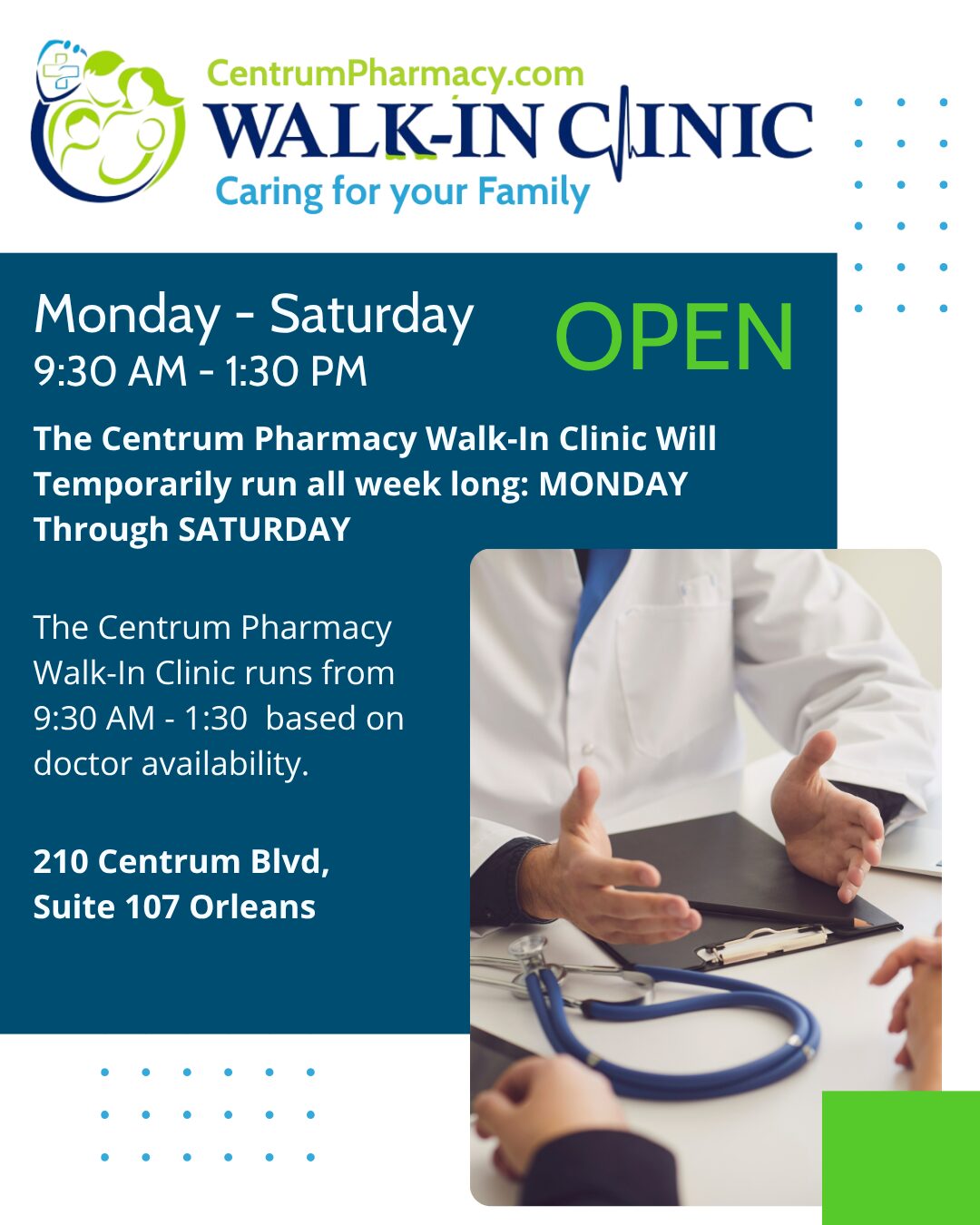Virtual Doctor Visits Now Available Through Centrum Pharmacy and Rocket Doctor
At Centrum Pharmacy, we believe your pharmacist is more than just a medication expert—they’re your trusted health partner. That’s why we’ve teamed up with Rocket Doctor to make healthcare more accessible than ever before. Thanks to this partnership, you can now book a FREE virtual appointment with a licensed physician, right from the comfort of your home. This telemedicine service is covered by OHIP and typically available the same day. Your Centrum Pharmacist will work closely with your Rocket Doctor physician to ensure you receive a personalized treatment plan tailored to your health needs and lifestyle. It’s seamless, convenient, and all about putting your health first.



